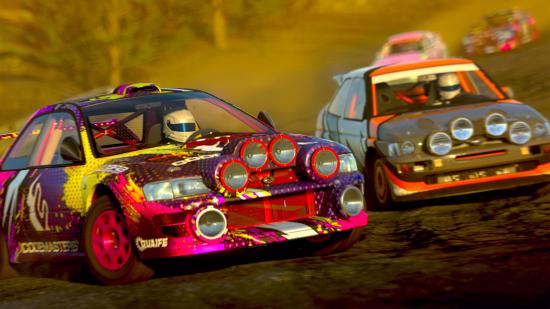Dirt 5 was the only arcade racing game available on launch of both the Xbox Series X|S and the PlayStation 5. As such, it quickly became one of the go-to games when comparing performance of the next-gen consoles. Gameplay footage and screenshots were painstakingly pulled apart online as console fans looked to establish an early dominance in the so-called console wars.
But over at Codemasters, the development team was celebrating launching several versions of the game, all with different features, on time, and to a relatively good reception amid a global pandemic. Developing and shipping a game isn’t easy, but it’s made ten times harder when the development team is forced to work from their own homes.
While Dirt 5 shipped with some performance problems, Codemasters is now focused on improving the game over time and delivering fans the ultimate experience on whatever platform they choose to play on. To find out more about these improvements and how the development process has gone, we spoke to Robert Karp, Dirt 5’s development director.
The Loadout: How did you guys find developing and shipping a game in the midst of a global pandemic?
Robert Karp: Firstly I think it’s important to say that we’ve got quite a lot of new people at the moment, so for a lot of people this was their first game. With an established team, there is a certain knowledge base of how things work in the team, making things slightly easier, which unfortunately we didn’t have.
There have been some benefits to working from home, but also some drawbacks. I just crack on, but there are a lot of people who work with us that have kids and as such they might not be available during certain times of the day. In the evenings, out of professionalism, they’re getting in on it and doing more work. We’ve had some people who have worked extremely hard and done a really good job.
We didn’t have any mandatory crunch, but there were times where we encouraged people to go that extra mile because shipping a game is hard and shipping a game on so many platforms is even harder, especially when you’re doing it remotely.
What’s been difficult for us is that we’ve had a number of versions of the game that we’ve had to create – PC, PS4, PS4 Pro, Xbox One, Xbox One S, Xbox One X, Xbox Series X, Xbox Series S, and PS5. That means it’s really hard for everybody to view the games on all the platforms. We don’t actually have enough of those dev kits for all the consoles to give to everybody so they have to be divvied out as you see best.
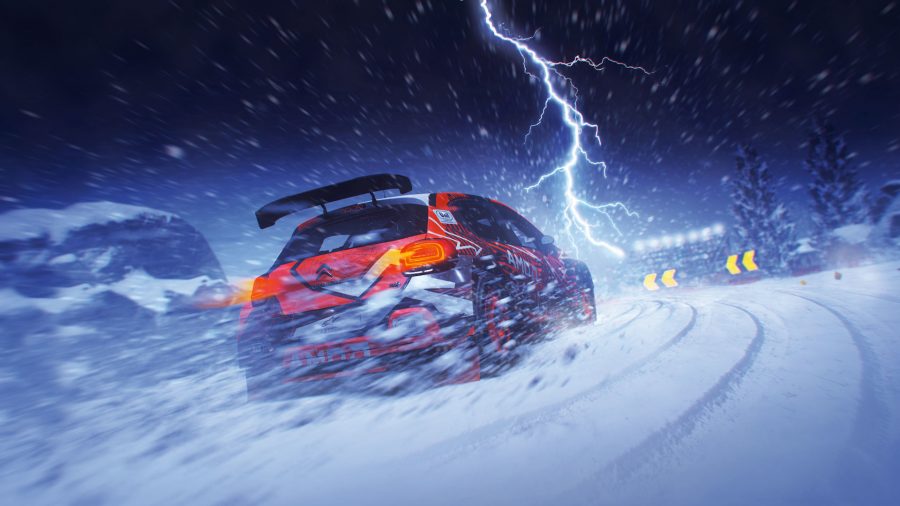
On next-gen, when everything’s new and you’re doing things for the first time, it’s hard to know what’s right and what’s not, especially when it comes to QA. They might have someone testing the PS5 or the Xbox Series X and they don’t know if what they’re seeing is a bug or not.
At the same time, we’re super lucky because most industries have really struggled during COVID and games have generally sold well, we’ve been able to carry on working and deliver a game, so you know, as much as I talk about the difficulties, it’s about perspective.
Obviously mandatory crunch is a bad thing, but separating personal life from your work life when you’re working from home is quite difficult. When it came close to the shipping date, what sort of stuff were people doing out of hours?
I can only speak for myself, but I was putting in the hours I needed to get the work done. We did have some overtime for QA, working weekends and stuff like that, but it was all paid. The team really care about the game and they want it to be as good as possible, so they end up putting in extra hours to try and make it as polished as can be.
There were times where we had a big delivery for a Monday and we had a lot of stuff, so I asked people if they could work over time and we organised food and bits for them.
We had one guy who was working on extra photo mode features over a weekend because he likes doing it, which is good. But I’m also telling them that they need to spend their time having balance and getting outside. But, ultimately they’re in control of their time.
You mentioned having limited access to the dev kits. What did you make of them when you got them for the first time?
Not everyone in the studio has access to both the Xbox One and the PS4. Some people don’t even have one. Not having enough to spread them out isn’t unfamiliar to us, but next-gen dev kits are limited. The manufacturers want to make sure that every development team has what they need – but not way more.
Getting the kits for the first time is a really exciting experience though, particularly when you get the prototype ones. Even when you get the early production kits or they’ve changed since the last ones, they’re always really exciting to see.
The DualSense had some really interesting samples that you could run. But yeah, figuring out how those pieces of hardware work, what is easy to do, what changes we need to make to our engine, and how quickly we can do that is all unknown until you start digging in.
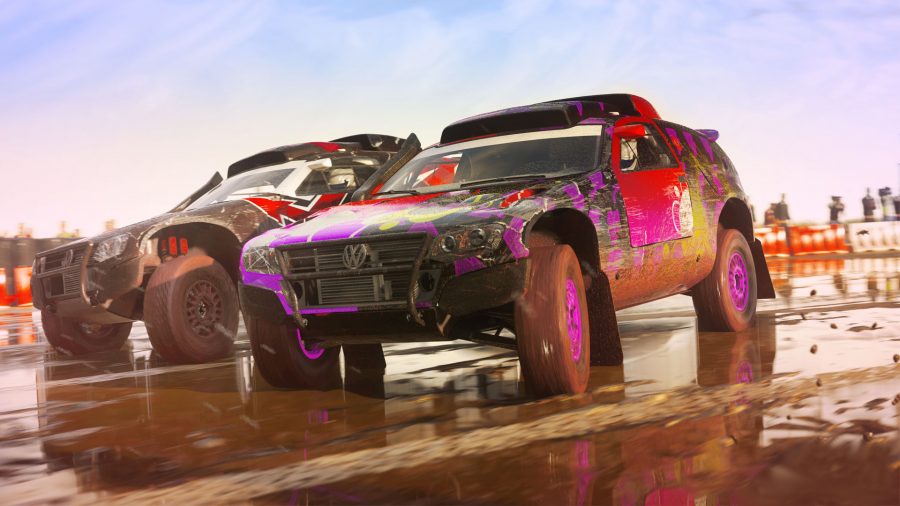
From a timescale perspective, when did you get to try the dev kits for the first time?
That’s a great question, but I’m not sure I remember. We’ve had them a good while now, but I couldn’t tell you which platforms we got first or when we got them.
I’m assuming you had a relatively decent amount of time to work with them?
I think so. But the hard thing about working on launch titles is that not only is sometimes the hardware being innovated, but the development tools and the system software for the consoles are being developed as you’re working. Sometimes you’re coming to an issue, finding a bug and not being able to move past it, not knowing if it’s the issue with the game or the engine, or if it’s an issue with the platform. That’s when you’ve got to start the conversations with the platform owners.
I’ve worked on a few launch games now and that’s not uncommon. Making games is hard, but making consoles is way harder.
Going back to the DualSense. You mentioned there was a lot of excitement in the office, so when you got your hands on it for the first time, what sort of samples were available?
When we first got the prototype for the DualSense controller, it was actually a PS4 controller in shape but it had some of the adaptive triggers and haptics in it. So it wasn’t one of the nice new shiny white ones, it was more like a PS4 controller.
They had a little shooting sample, where you could shoot a bow and arrow or guns, but then the triggers did different things based on the weapon and how it was firing, so it was pretty cool.
So that spurred the ideas we see in Dirt 5 now then?
It definitely spurred some of them. We’re not quite finished with them just yet – we’re still making some tweaks and changes. We’re quite happy with what we’ve got but we think it can be improved.
I think that the longer people have these controllers for – and the same is true for the consoles – the more ideas and things will get pushed forward.
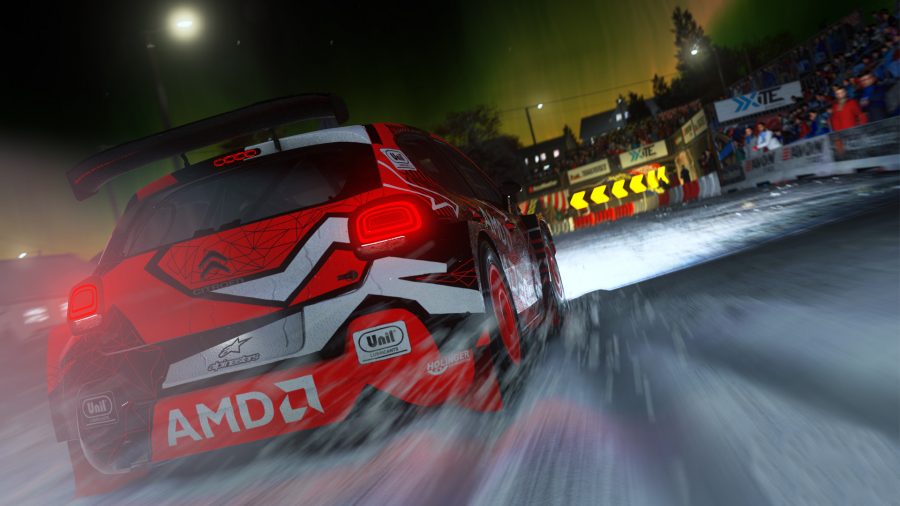
David Springate said he wasn’t happy with the current haptics and adaptive features of Dirt 5, but it seems everyone else is. So was that born out of looking at other launch titles, maybe something like Astro, in how these features are implemented?
I wouldn’t say I’m unhappy with it, but I think there’s room for growth. I think Astro’s Playroom is a really good demo of what the controller can do. It’s a great little game, but my favourite part is the controller demo when they drop the bots in and it’s like you can feel them inside. I think that’s really great, so based on that, we had some further ideas.
Launching a game is hard, especially having multiple versions with different deadlines, so we did as much as we could, but we knew we wanted to do more. But for us it was really important for it to be there at launch.
What sort of changes are you going to make?
We’re not making a huge amount of changes to the adaptive triggers – we quite like the way they work, but we are going to be tuning it to the vehicles more. So making it a little bit harder to push as you get down into the some of the acceleration. Similar to that will be the braking, so making it a bit stiffer to be like what some cars are in real life. It depends on how you play, though. If you have ABS on and you over-brake and the ABS kicks in, you should be able to feel that more clearly.
Some of the other tweaks we’re making is more to the haptic feedback and the rumble to get a better simulation.
Is that across terrains as well?
Yeah. Across things like mud, dirt, tarmac to give more of a distinct feeling, and what it’s like when you’re in grip on those surfaces versus what it’s like when you’re sliding and drifting.
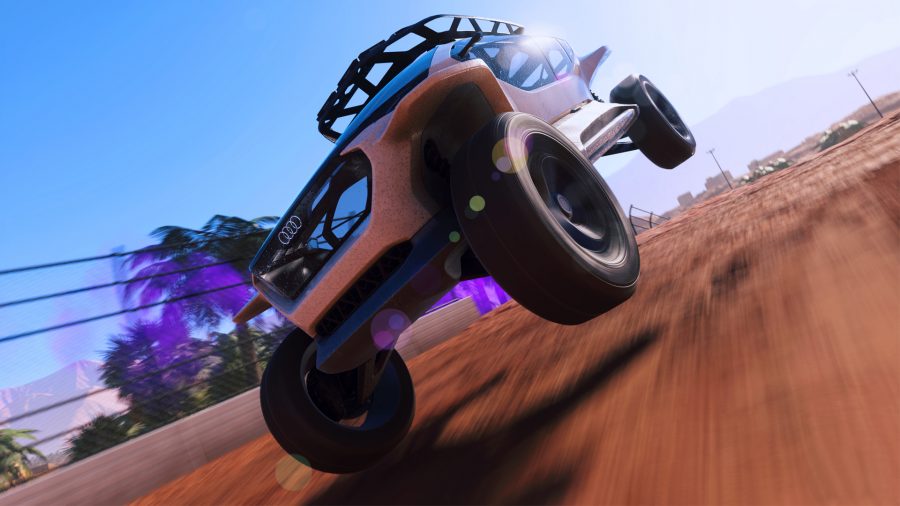
When can fans expect to see new and improved haptics and triggers?
There are a lot of moving parts, but I think early next year there will be updates. It could be sooner – but I think January/February time is possible.
What would you say is the biggest thing about the dev kits when it comes to developing the game around the new features?
For me, both from a development and a player perspective, I think the fast loading is a game changer. Firstly, in terms of development, it allows you to test your changes faster, and as a player, previously when I had 15 minutes, I wouldn’t turn it on because I don’t have time. Now I can sit down and play just 15 minutes – it’s more realistic.
David Springate called the controller an “industry game changer” just before the game launched on PS5. I know we’ve talked about quick resume and why it’s very much a next-gen feature, but would you say the DualSense has changed the game too?
I think it can do that, but it’s probably a little early to say if it has moved games forward.
When you look back at the PS3 and PS4, PlayStation has been trying to innovate on the controller with motion sensors and stuff like that. You could argue they’re valiant efforts, but probably they didn’t make it into every game. Some of the PS5 features will though, but it’s probably a bit early to call yet.
Do you think it adds to the racing genre as a whole though?
Definitely. The microphone also adds really well, the feel and the feedback too. When we get to see simulation racers, I think that will be really interesting, particularly with the grip and the traction. I think it will give you more feeling and more control.
I also think that both consoles being able to do 120 hertz, along with that extra feedback, means you’ll get a smoother experience and while it’ll feel not necessarily faster, it’ll feel easier to hit the apexes.
Dirt 5 was one of the only arcade racing games that was available on next-gen consoles at launch. As such, it became a bit of a talking point in regards to early comparisons. What did you make of the game being thrown about in the so-called console wars?
On one hand, I understand it, and on another hand, I think it’s a real shame.
I understand when you spend £400 or whatever and you want to say ‘I bought this thing, but this other thing isn’t as good because I bought this.’ But I think both consoles are great, they offer really great things, and they’re not the same. I think that’s great for gaming and the community. And I think anyone who actually has one should count themselves lucky because loads of people really want one and haven’t been able to get one yet.
Other games have been used to show differences between the two platforms, but with cross-platform and cross-generational games, the developers only have so much time, and so many people with the hardware. All of the launch games I’ve seen look great, so they should all be really proud of themselves.
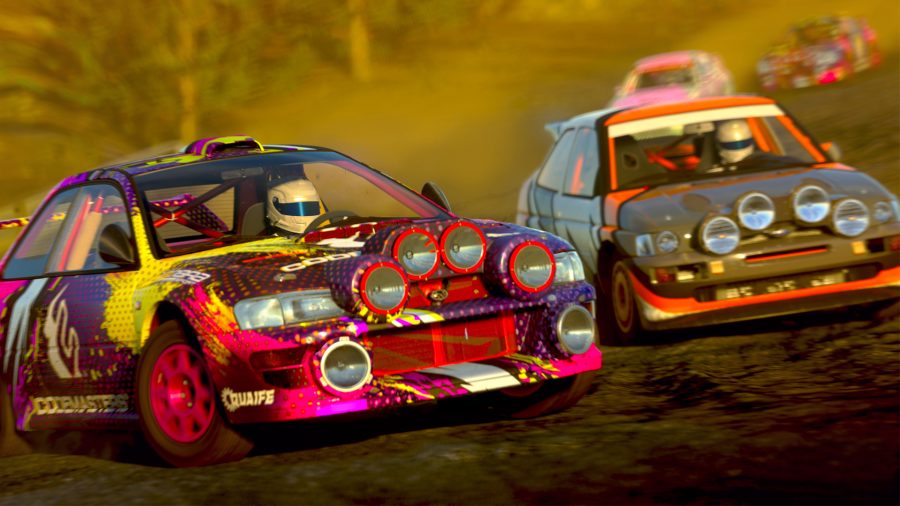
How close are you to fixing up the problems highlighted by the community on launch?
We do have an update that will be coming out soon that will address almost all of those issues. But we have got quite a big service plan for the game with lots of big features, and lots of DLC content, and we will be continuing to optimise and improve performance and stability during that service. So a screenshot of what the game looks like right now or after the patch comes out may not be the same by the time we’ve finished anyway.
So lots of stuff to come in the future then?
We plan to support the game a lot both for single player, multiplayer, and also for our Playgrounds mode. We’ve got loads of really cool stuff in the works, but we want it to grow and want it to be a place where people come and have fun.
It must be really cool to see people using your tools to create such amazing things too.
It’s really impressive. We did a playtest session in the studio where on a Friday morning you build a Playground and on Friday afternoon play some of the others. We made some interesting stuff, but then in August or September, we did a demo where we allowed some media and content creators to build tracks, and I was totally gobsmacked with what they’d managed to make with an incomplete tool set.
Since we’ve launched the game, it’s been taken to the next level. As we look to add more features and items to Playgrounds, I’m looking forward to seeing what people create.
You’ve said you’re planning to support the game for a long time, but will that be across all versions of the game?
All our DLC will be on all SKUs. Our features will be on all platforms where applicable – so you know there won’t be 120 frames mode on PS4 or Xbox One for example.
